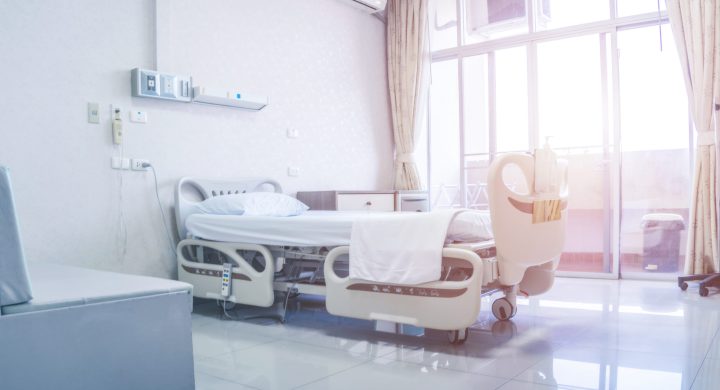
Preventing infection is a foundational priority in the hospital setting. Infection is a costly reality in a close-quartered, heavily-trafficked, fast-paced healthcare environment, accounting for nearly 100,000 deaths and $28 billion in added expenses every year.
Hospitals deploy rigorous cleaning and disinfection standards that often rely on quaternary ammonia, chlorine or hydrogen peroxide-based cleaners to combat infection. However, these readily available products present risks of their own.
Most notably, as the National Institutes of Health notes, chlorine compounds, hydrogen peroxide, and other similar cleaners are associated with adverse health effects. Specifically, “inhalational exposure to these chemical agents may contribute to adverse health outcomes such as upper airway irritation and irritant or sensitizer induced asthma.”
At the same time, bleach and hydrogen peroxide can harm expensive surfaces (both hard and soft) in the hospital. In other words, quats, bleach and hydrogen peroxide-based disinfectants can be dangerous to people, ineffective for patients, and harmful to physical surfaces.
What is HOCl?
HOCl was identified nearly two centuries ago. It was discovered in 1834 by French chemist Antoine Jerome Balard when he mixed mercury oxide and water into chlorine gas. He also found that HOCl was an effective and safe disinfectant. HOCl exists naturally in the human body, created by white blood cells to defend against bacteria and viruses. It’s the body’s natural way of preventing infection.
Today, HOCl is widely used across industries as a cost-efficient way to maintain cleanliness standards without compromising people’s health or damaging physical surfaces. This includes:
The Food and Drug Administration (FDA) approved HOCl for food products, including meat, fruits, and vegetables, and food-contact surfaces, utensils, and other equipment.
The FDA approved HOCl for numerous therapeutic support and infection treatment solutions.
The USDA approved HOCl as a food sanitizer and water treatment solution.
The Department of Agriculture approved HOCl for use in the National Organic Program.
The Environmental Protection Agency (EPA) approved HOCl as a food sanitizer, water treatment solution and surface disinfectant for hospitals.
With all these benefits, hospital administrators and decision-makers might wonder why they don’t already implement this safe, affordable, and effective disinfection solution.
HOCl vs. Other Disinfectants
HOCl is the most powerful oxidant in the chlorine family, outperforming bleach or hydrogen peroxide-based cleaners across various metrics. Specifically, HOCl is:
80x-100x more effective than bleach
pH neutral (similar to milk/human tears)
Nontoxic, safe, gentle on surfaces
Neutral charge: does not repel bacteria but it attracts them
Zero bacterial resistance
Environmentally safe, naturally occurring
The primary effectiveness of any chlorinating disinfectant, including HOCl, lies in its free chlorine content. HOCl has a delicate balance, striving to stay as an acid or revert to a basic form. This balance, and the subsequent maintenance of the ideal pH, can make preserving the solution’s primary component—approximately 97 percent free chlorine—challenging in that it can be difficult to maintain a long shelf life.
The free chlorine’s potency determines the efficacy of the solution. However, it’s crucial to note that free chlorine usually constitutes a considerably smaller percentage of the overall solution. What sets hypochlorous acid apart is its unusually high free chlorine content, which typically ranges from 95 to 97 percent. This high free chlorine concentration makes HOCl an ideal choice as a disinfectant.
While lower concentrations can be safely used to treat drinking water, sanitize food, and cleanse wounds, HOCl products approved for disinfection in the US typically contain 180-460 ppm of free available chlorine.
In the healthcare setting, some highly resistant pathogens require 500 ppm or greater to be effective. Nevoa’s Nimbus fogging system is powered by Microburst which contains 1000 ppm of HOCl. This reduces contact times required to provide an efficient and effective method of killing the toughest pathogens. Nimbus reaches 100 percent of surfaces and room air, allows immediate room re-entry, and delivers LOG 4-6 EPA registered efficacy.
Fogging technologies often rely on hydrogen peroxide and other harsh chemicals that harm equipment and require extended room closures to settle and dissipate, but fogging with HOCl prevents these problems while elevating overall effectiveness.
In essence, HOCl’s high free chlorine content and non-toxic nature make it a powerful, safe, and eco-friendly disinfectant. Its effectiveness, evident in systems like Nevoa’s Nimbus, surpasses technologies that rely on more harmful chemicals, which require longer durations for safe room re-entry.
Make Healthcare Safer and More Sustainable
With infection prevention at the heart of healthcare, and hospitals constantly battling the adverse effects and inefficiencies of conventional cleaning agents, HOCl emerges as a breakthrough solution.
Nevoa’s technologies leverage the power of HOCl in a hospital-grade surface disinfection system that is highly effective and safe for immediate room re-entry. This is a significant step away from the harmful chemicals and prolonged room closures associated with many current disinfecting technologies.
Join us in revolutionizing healthcare safety and sustainability. Contact us today to learn how Nevoa’s technologies can transform your healthcare environment.
